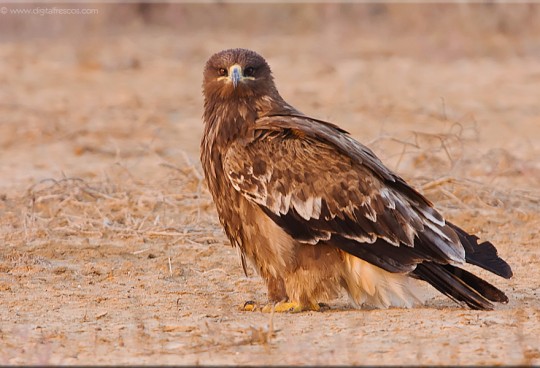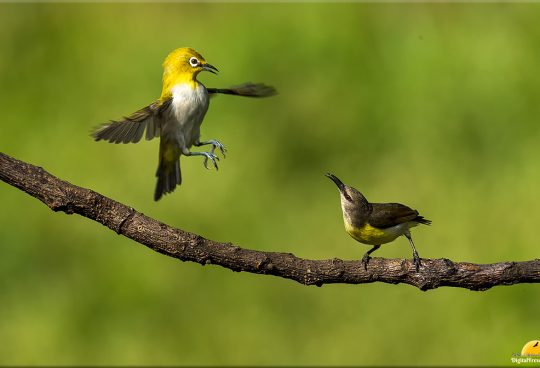The rufous-necked hornbill (Aceros nipalensis) is a species of hornbill in northeastern India, especially in Arunachal Pradesh, Indian Subcontinent and Southeast Asia. It is locally extinct in Nepal due to hunting and significant loss of habitat. There are < 10,000 adults left in the wild. With a length of about 117 centimetres (46 in), it is among the largest Bucerotine hornbills. The underparts, neck and head are rich rufous in the male, but black in the female. The head, neck, and lower body of the male are coloured rufous, with deeper colouration on the flanks and abdomen. The middle primaries and the lower half of the tail are tipped white. The rest of the hornbill’s plumage is a glossy dark-green and black. The lower tail-covert feathers are coloured chestnut mixed with black. The female, on the other hand, is black, except for the end-portion of her tail and the tips of the middle primaries, which are white. Juvenile hornbills resemble adults of the same sex, but lack the ridges at the base of the upper beak. The beak lacks a true caique but is thickened at its base. It has a number of dark ridges on the upper beak which are absent in the young and increase in number with age up to about seven. The commissure of the beaks is broken for both sexes.
While predominantly a bird of ridged and hilly forests, chiefly broadleaved forests at altitudes of 150–2,200 metres (490–7,220 ft), it has also been recorded in dry woodland. The nesting period is from March to June, the trees preferred are tall and have broad girths. These hornbill communities move between one forest to another depending on seasonally to forage from fruiting trees that change with local conditions. The bird feeds on Mainly fruits, including figs and mangoes, but dietary specifics poorly known, although includes Dysoxylum during breeding season.
The rufous-necked hornbill occurs in Sanskrit literature under the epithet vārdhrīnasa, a term which at times also has been used to refer to other Bucerotidae. In Arunachal Pradesh, rufous-necked hornbills have been hunted by tribals for their feathers and beak. Rufous necked hornbill is classified as vulnerable by IUCN. Recent initiatives by the Wildlife Trust of India, Arunachal Pradesh Forest Department and other citizens to conserve hornbills, which also target the rufous-necked hornbill, are the Hornbill Nest Adoption Programme, and a programme for replacing the use of real beaks with fibre-made replicas.
![]()






Sorry, the comment form is closed at this time.